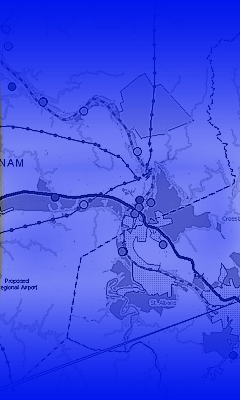
| Home | Registration | Schedule | Location and Lodging | Papers and Presentations | Sponsors and Exhibitors | Online Map |
 |
Schedule Overview Schedule Workshop Agenda Presentation Schedule (Wednesday) Presentation Schedule (Thursday) Keynote SpeakersGary R. Harp - Wednesday, May 17th Gary R. Harp is the Director of Kentucky's Division of Geographic Information (DGI), which is located within the Commonwealth Office of Technology. Gary assumed the role as Director of DGI on 15 March 2004 and represents the Commonwealth of Kentucky in Geographic Information related issues. Gary was formerly the Data Integrity Manager for Kentucky's Cabinet for Families and Children, and has experience in numerous public, military and private settings, that included being Chief of Staff for Information Management of an Army Reserve Division, Commander of an Army Reserve Brigade, Commander of a Battalion Plus sized Task Force during Desert Storm, as well as an Army Reserve Battalion. In the private sector Gary has been CIO for Total Wellness, Inc., President of Gary R. Harp IT Consulting, and President of several other companies. His current duties include the establishment of policies, strategic and tactical planning, budget preparation and general oversight for expanding Geographic Information related activities throughout the Commonwealth. As Director of DGI, Gary is accountable to the Commissioner of the Commonwealth Office of Technology and to the Secretary of Finance. Gary has a BS in Psychology, a MPA in Public Administration and additionally has graduated from the Army Command & General Staff College as well as the Army War College. Sean Ahearn - Thursday, May 18th Professor Ahearn likes to give a talk called "Dead Crows, Bengal Tigers and the Big Apple: Modeling Complexity in Space and Time" when he is invited to lecture at other Universities. "People come just to find out what these three things could possible have in common.", he says. "Well it turns out they are all phenomena that can be modeled using technologies developed in the field of Geographic Information Science (GIS)." We are all familiar with maps and what a map constitutes is a static model of some aspect of the world, whether it's a road map or a geology map. GIS is an outgrowth and extension of mapping in that we now have the technologies to model the world as a dynamic, spatially correlated phenomenon which is influenced by processes across space, time and over different scales." The "Dead Crows" refer to a project on predicting risk of infection of humans due to West Nile Virus which is presaged by the dying off of infected birds (especially crows) in an amplifying cycle between mosquitoes and birds. The spatial-temporal algorithm developed by Ahearn, his former Ph.D. student Dr. Constandinos Theophilides and his colleague, Professor Ed Binkowski of the Department of Math and Statistics at Hunter, has been used to target remediation efforts in New York, Chicago and now California. "This is the second year in a row that California is using our model so this is a good sign they believe in its efficacy", says Ahearn. Their work is published in the American Journal of Epidemiology (2003) and the International Journal of Geographic Information Science (2006). The "Bengal Tiger" refers to a project that Ahearn is working on with at tiger biologist, Professor James David Smith at the University of Minnesota. Ahearn, and Smith developed the first individual-based object model for modeling tigers in the wild. "We created a dynamic-spatial temporal model in which tigers mate, hunt, traverse their home range and are poisoned by villagers. It enables us to analyze the long-term viability of tiger populations given different management scenarios and prey densities". Their work is published in the Journal of Ecological Modeling (2001) and the book GIS, Spatial Anlaysis and Modeling (2005). The "Big Apple" refers to a project Ahearn has been involved in for over 10 years, which is to help the city build a digital base-map of its entire infrastructure. Called NYCMap, the project is funded by the Department of Information Technology and Telecommunications and the Department of Environmental Protection. NYCMap contains over 20 layers including building outlines, curb lines, roads, parks, subway structures and others. "NYCMap played a critical role in the response to 911. It gave the City a geographic framework for integrating new remote sensing images, for providing infrastructure status, and for managing building inspections, to name just a few." Ahearn and his team at the Center for Advanced Research of Spatial Information (CARSI), where he is director, are currently working on developing the digital version of the sewer system. Over the last 4.5 years Ahearn's CARSI lab has brought in over 10 million dollars in research grants. |
||
| Conference Hosts | |||
| Copyright 2005, West Virginia GIS Technical Center. All Rights Reserved. Contact Frank LaFone with any questions or comments |